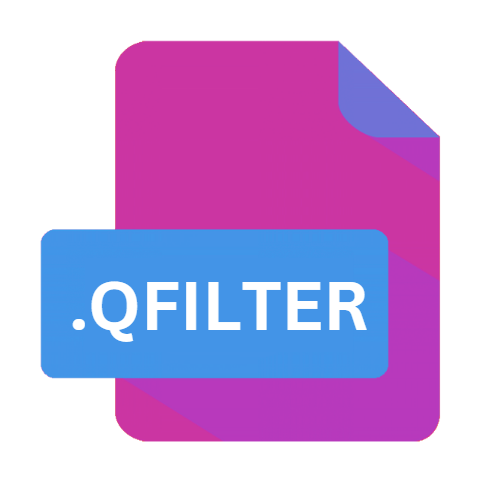.QFILTER File Extension

ColorSync Utility Quartz Filter
| Developer | Apple |
| Popularity | |
| Category | Data Files |
| Format | .QFILTER |
| Cross Platform | Update Soon |
What is an QFILTER file?
.QFILTER files are associated with Apple’s ColorSync Utility, an application designed to manage color profiles and ensure consistency across various devices and platforms.
Within the ColorSync Utility, Quartz Filters serve as a key feature, enabling users to apply a variety of adjustments and transformations to digital images.
More Information.
Quartz Filters were initially introduced alongside the release of macOS X 10.2 Jaguar in 2002. They were designed to leverage the capabilities of ColorSync, Apple’s color management system, to provide users with a seamless workflow for applying color transformations and adjustments to images.
The primary purpose was to empower users to achieve consistent and accurate color reproduction across different devices and mediums.
Origin Of This File.
The concept of Quartz Filters traces back to Apple’s macOS operating system, where they were introduced as part of the Quartz 2D graphics framework. With the integration of Quartz technology into macOS, developers gained powerful tools for rendering, compositing, and manipulating graphical content.
Quartz Filters emerged as a means to extend this functionality specifically for image processing and color management tasks.
File Structure Technical Specification.
.QFILTER files are essentially XML-based documents that contain instructions for performing various operations on digital images.
These operations may include color adjustments, image filters, color space conversions, and other transformations.
The structure of .QFILTER files typically comprise a series of XML tags and parameters that define the desired image processing pipeline.
The technical specifications of .QFILTER files may vary depending on the specific operations and parameters defined within them.
They generally adhere to standard XML syntax and may include elements such as <dict>, <key>, <string>, <integer>, and <array> to represent dictionaries, keys, strings, integers, and arrays respectively.
How to Convert the File?
Converting .QFILTER files to other formats or platforms typically involve exporting or translating the filter settings into a compatible format. Here are some methods for converting .QFILTER files:
- Third-Party Software: Several third-party applications offer support for importing .QFILTER files and converting them into other formats. These applications may provide tools for recreating filter settings in a format compatible with different operating systems or image editing software.
- Manual Recreation: If no direct conversion tool is available, users can manually recreate the functionality of the .QFILTER file using equivalent tools or plugins available on alternative platforms. This process involves examining the settings and parameters defined in the .QFILTER file and replicating them using the features provided by the target software.
- Scripting or Automation: For users proficient in scripting or automation, it may be possible to develop scripts or workflows to automate the conversion process. This approach involves parsing the XML structure of the .QFILTER file and generating equivalent instructions or configurations for the target platform or software.
- Exporting to Compatible Formats: Some applications or platforms may offer the ability to export .QFILTER settings to formats compatible with other systems. Users can explore options within the originating application or third-party plugins to export filter settings in a widely supported format such as ICC profiles or LUTs (Lookup Tables).
Advantages And Disadvantages.
Advantages:
- Flexibility: .QFILTER files offer a high degree of flexibility, allowing users to define custom image processing workflows tailored to their specific requirements.
- Integration: They seamlessly integrate with Apple’s ColorSync Utility and other macOS applications, providing users with convenient access to advanced image manipulation tools.
- Consistency: By leveraging ColorSync’s color management capabilities, .QFILTER files help ensure consistent color reproduction across different devices and platforms.
Disadvantages:
- Complexity: Creating and editing .QFILTER files may require a certain level of technical expertise, as users need to understand the intricacies of image processing and color management.
- Limited Compatibility: .QFILTER files are primarily designed for use within the macOS ecosystem, which may limit their compatibility with other operating systems and software platforms.
- Performance Impact: Applying complex image processing pipelines defined in .QFILTER files may impose a performance overhead, particularly on resource-constrained systems.
How to Open QFILTER?
Open In Windows
- Install Conversion Software: Download and install a third-party conversion tool that supports .QFILTER files or equivalent color management formats.
- Import .QFILTER File: Open the conversion software and import the .QFILTER file.
- Convert to Compatible Format: Follow the software’s instructions to convert the .QFILTER settings into a format compatible with Windows-based image editing applications.
Open In Linux
- Review .QFILTER Settings: Examine the settings and parameters defined in the .QFILTER file.
- Identify Equivalent Tools: Identify equivalent tools or libraries available on the Linux platform for performing the desired image processing tasks.
- Recreate Filter Settings: Use the identified tools to recreate the filter settings manually, replicating the adjustments specified in the .QFILTER file.
Open In MAC
- Locate the .QFILTER file: Navigate to the location where the .QFILTER file is saved.
- Double-click on the .QFILTER file: This action should automatically open the file in ColorSync Utility, where you can view and modify the filter settings.













